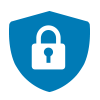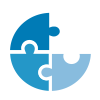2018-22 Goals and Strategies
The three goals and 11 strategies outlined below result from extensive analysis of workforce data.
That analysis included a Steering Committee partnership and consideration of existing programs and resources. Strategic and Business plan initiatives to address recruitment difficulties, loss of knowledge, and inefficient processes and misaligned resources were also considered. The three goals directly support the Talent Management, Risk Management, and Reduce Complexity Strategic Goals, which ultimately support CalPERS' two primary business lines: Fund Sustainability and Health Care Affordability.
Goal One - Talent Management
Expand focused recruitment strategies to attract a diverse and competent workforce.
Develop a new Supervisory Skills Enhancement (SSE) training module to expand the Hiring Manager Toolkit, and include expanded outreach to personnel liaisons. (FY 2019-20)
Anticipated Outcome
The SSE training module is intended to expand the Hiring Manager Toolkit to leverage screening criteria tools and improve internal hiring processes. Hiring managers and personnel liaisons are intended to complete their respective trainings to provide the greatest potential impact enterprise-wide.
Explore and develop alternative options for prescreening candidates to streamline the hiring process. (FY 2018-19)
Anticipated Outcome
Exploring and developing best practices for candidate prescreening, for example phone or group interviewing, is intended to assist hiring managers in narrowing the candidate pool to only interview in-person the most qualified candidates and reduce hiring times.
Add CalPERS competencies to duty statements and job postings in two phases:
- Phase I: FY 2018-19 Leadership
- Phase II: FY 2019-20 All team members
Anticipated Outcome
Adding CalPERS competencies to duty statements and job postings is intended to provide clear behavioral expectations for CalPERS team members and leaders. Competencies included on duty statements will help the hiring manager build screening criteria, statements of qualifications (SOQ), interview questions, and provide clearer expectations for the applicants.
Expand the use of the LinkedIn recruiter seats recruitment tool to increase the applicant pool for hard-to-recruit positions beyond executive positions. (FY 2018-19)
Anticipated Outcome
CalPERS uses LinkedIn recruiter seats to recruit some of our executive and investment positions. Expanding the use of LinkedIn recruiter seats to fill hard-to-recruit positions will increase the diversity of our applicant pool with well-qualified candidates and assist in the development of a talent pipeline for CalPERS' positions.
Develop a mechanism to capture and compile recruitment data to enhance outreach efforts. (FY 2018-19)
Anticipated Outcome
Capturing source data, such as how applicants heard about a job, is intended to track the effectiveness of our outreach efforts and shift our strategies of specific job vacancies to increase our pool of qualified applicants.
Goal Two - Risk Management
Integrate a culture that protects institutional knowledge to ensure business continuity.
Design a communication plan regarding the importance of knowledge transfer, expectations, and resources to safeguard institutional and technical knowledge from single point of failure, and incumbents who have been forecasted to separate within 0-2 years in critical positions. (FY 2019-20)
Anticipated Outcome
To actively mitigate the loss of institutional knowledge, each team leader who has been forecasted to separate within 0-2 years, from the May 2017 unit assessments, will be required to implement a knowledge transfer action plan. This effort can be mapped and measured to ensure knowledge loss is protected at every level. With leaders having many competing priorities and projects, this will elevate knowledge transfer efforts throughout the enterprise.
Require a knowledge transfer action plan for each team leader who has been forecasted to separate within 0-2 years, in partnership with our program areas, to instill long-term accountability. (FY 2019-20)
Anticipated Outcome
It is important to convey the operational impact that knowledge transfer has on the workplace. Extensive and continuous communication is key to integrating knowledge transfer into CalPERS' culture.
Develop and implement a workshop for leaders to expand and promote the importance of knowledge transfer. (FY 2019-20)
Anticipated Outcome
Leadership commitment is critical to the sustainability and longevity of knowledge transfer. These workshops will instill in leaders their significant role in the success of knowledge transfer and ensure a culture of ongoing institutional knowledge retention efforts.
Goal Three - Reduce Complexity
Make use of existing resources to align enterprise projects, business cycles, and increase efficiencies.
Implement a Lean curriculum across the enterprise. (FY 2018-22)
Anticipated Outcome
As CalPERS becomes a leaner organization, we should see increases in productivity, gains in efficiencies, reductions in costs, and may be able to shift resources to other organizational priorities. To promote a culture of Lean and continuous business improvement process, CalPERS is providing basic Lean White Belt training across the enterprise and is also integrating more data analytic Lean concepts, where applicable.
Create an enterprise-wide business calendar. (FY 2018-19)
Anticipated Outcome
There are enterprise business cycles (e.g., Strategic Measures, Formal Budget Request, Business Continuity, annual retirement peaks, and open enrollment) that require deliverables on a quarterly, mid-year, annual, or as-needed basis. Evaluating when deliverables are due and partnering with respective program owners to realign due dates is intended to ensure there are sufficient resources available to meet the deliverables, improve program/project forecasting, and balance workload across the enterprise.
Enhance the Workforce Planning Dashboard to create a Workforce Management Portal for team leaders to align resources with business priorities, in real time. (FY 2019-20)
Anticipated Outcome
The new Workforce Management Portal is intended to capture workforce data to provide a comprehensive view of CalPERS team members and the important work we do for our members. Enhancements to the portal are intended to prioritize business needs, locate and realign available resources, and increase efficiencies in real time.
Sections
- What is Workforce Planning?
- 2018-22 Goals and Strategies
- Approach
- Workforce Analysis
- Human Resources Division Mission and Vision
- Conclusion


